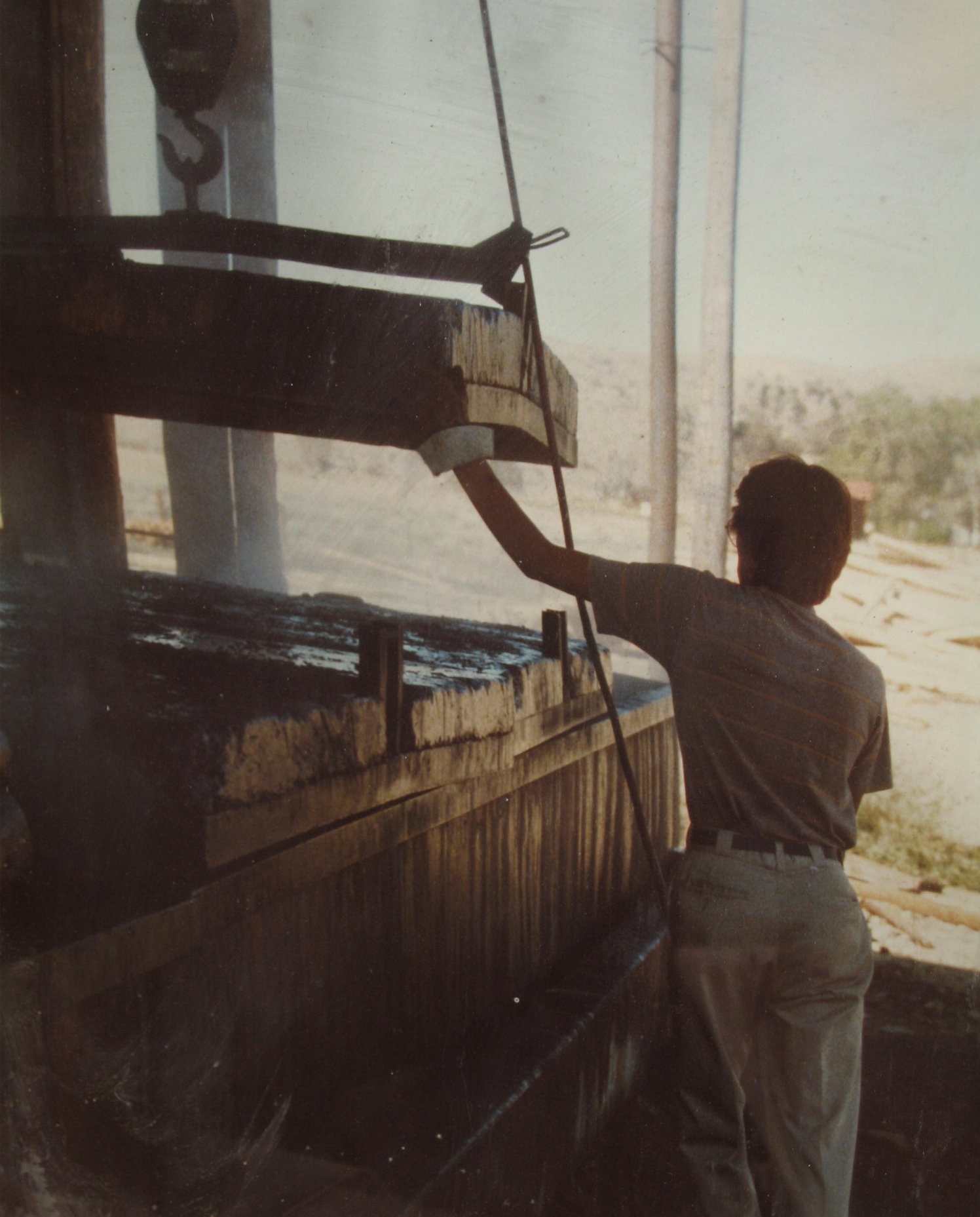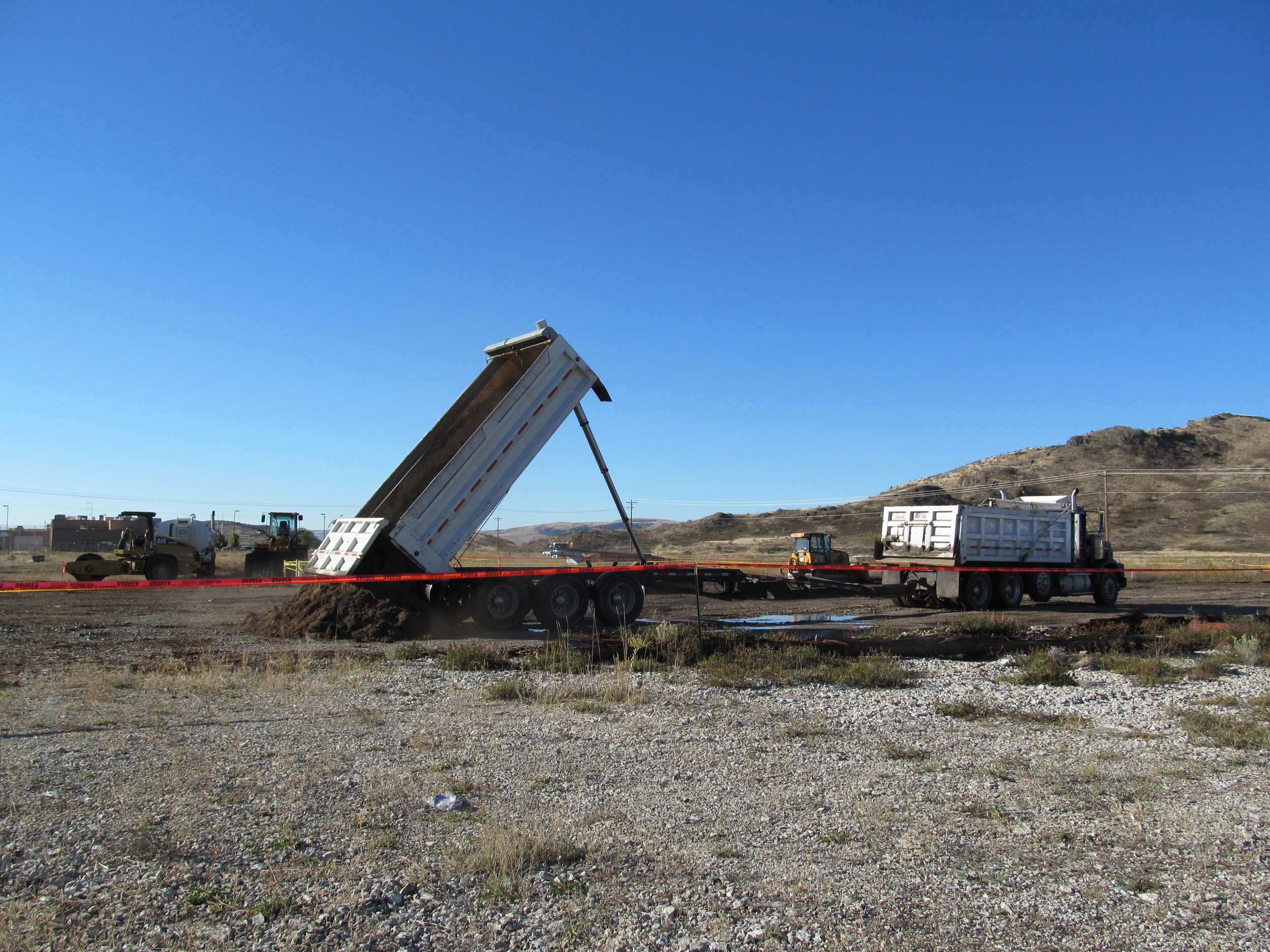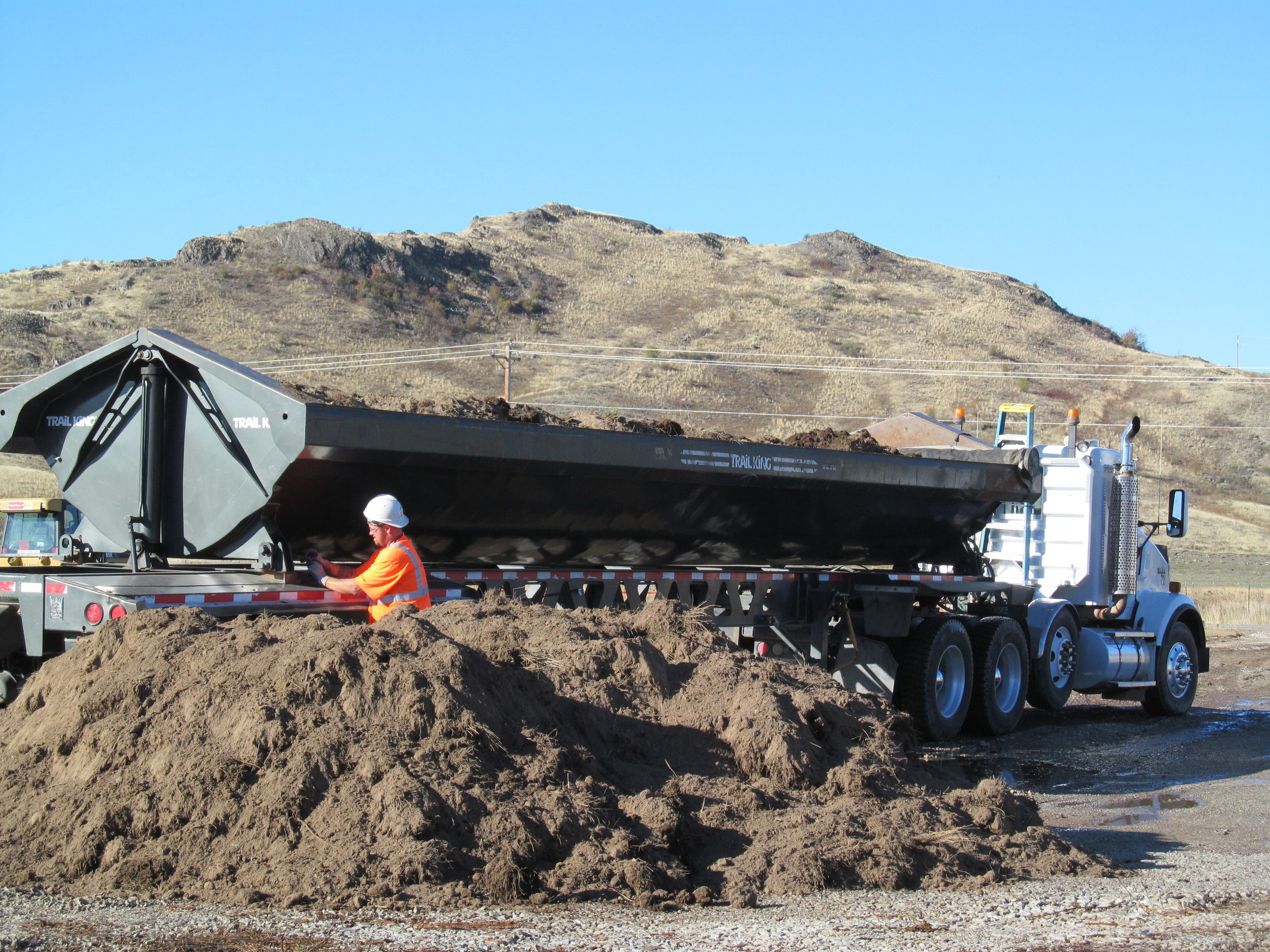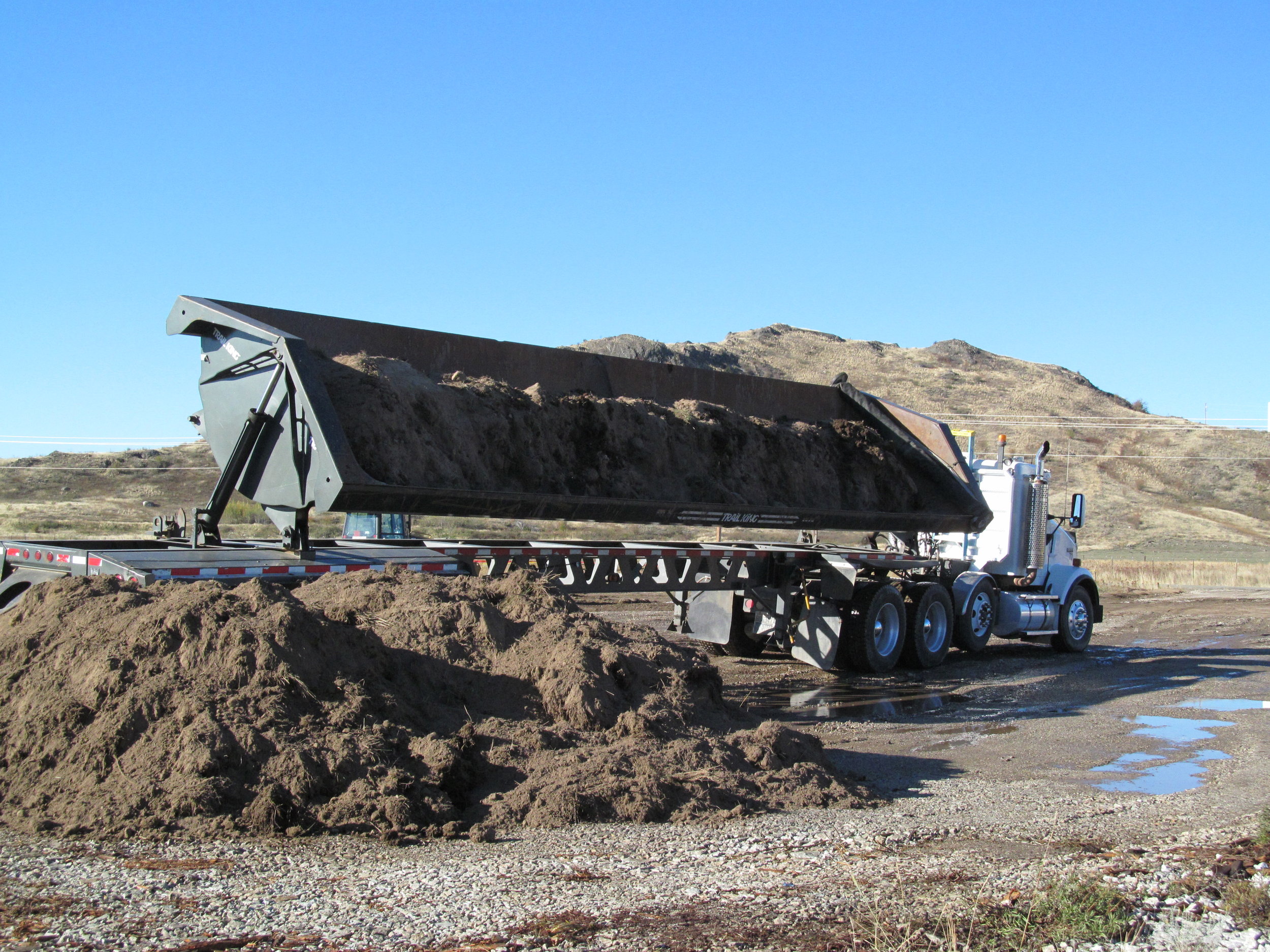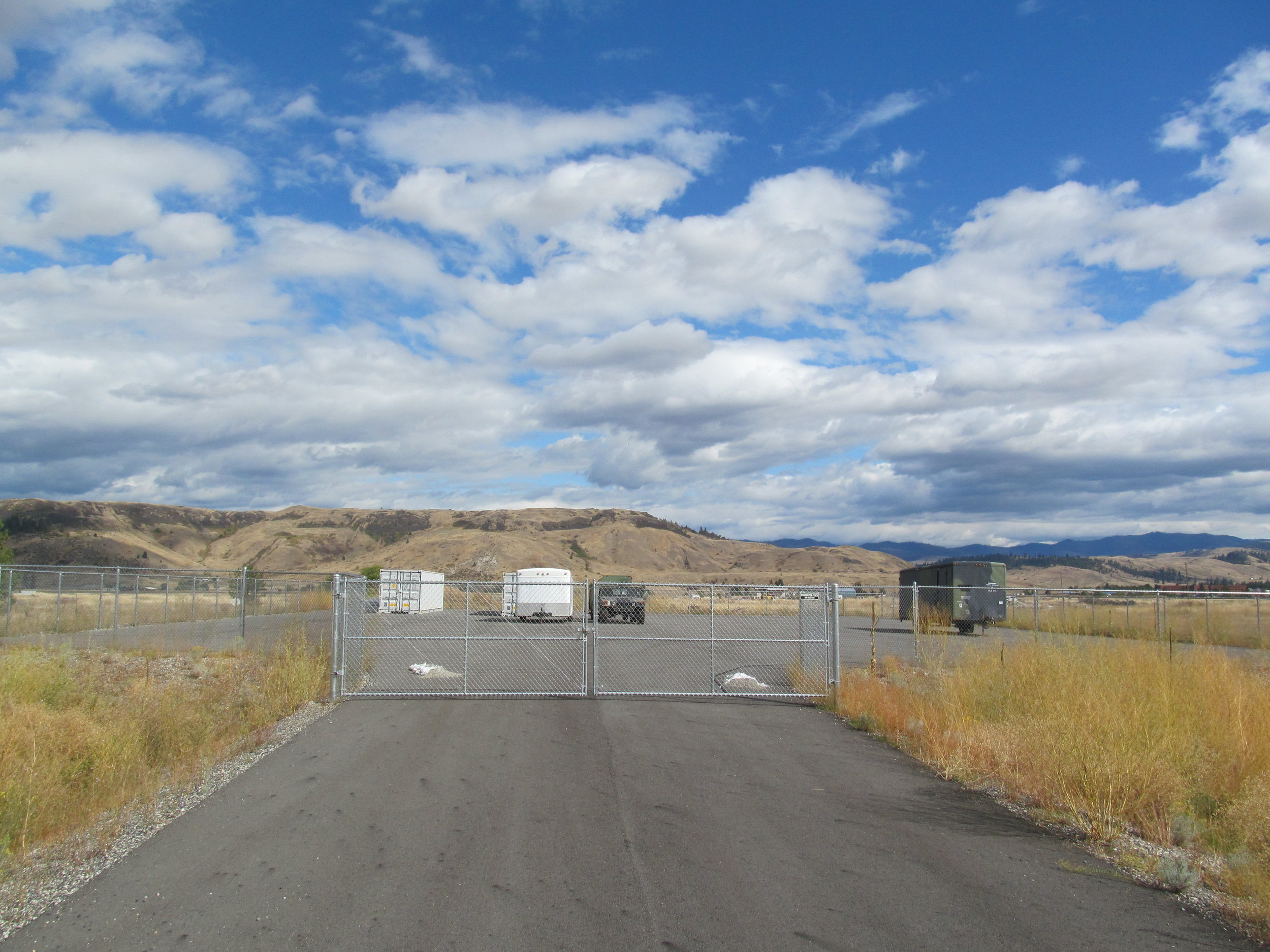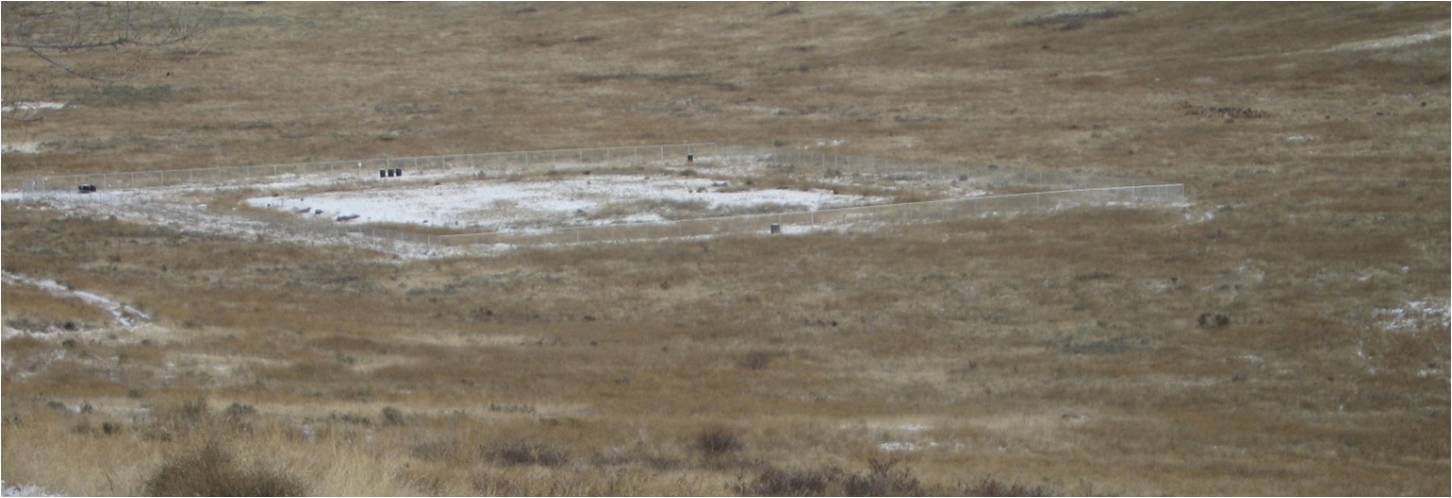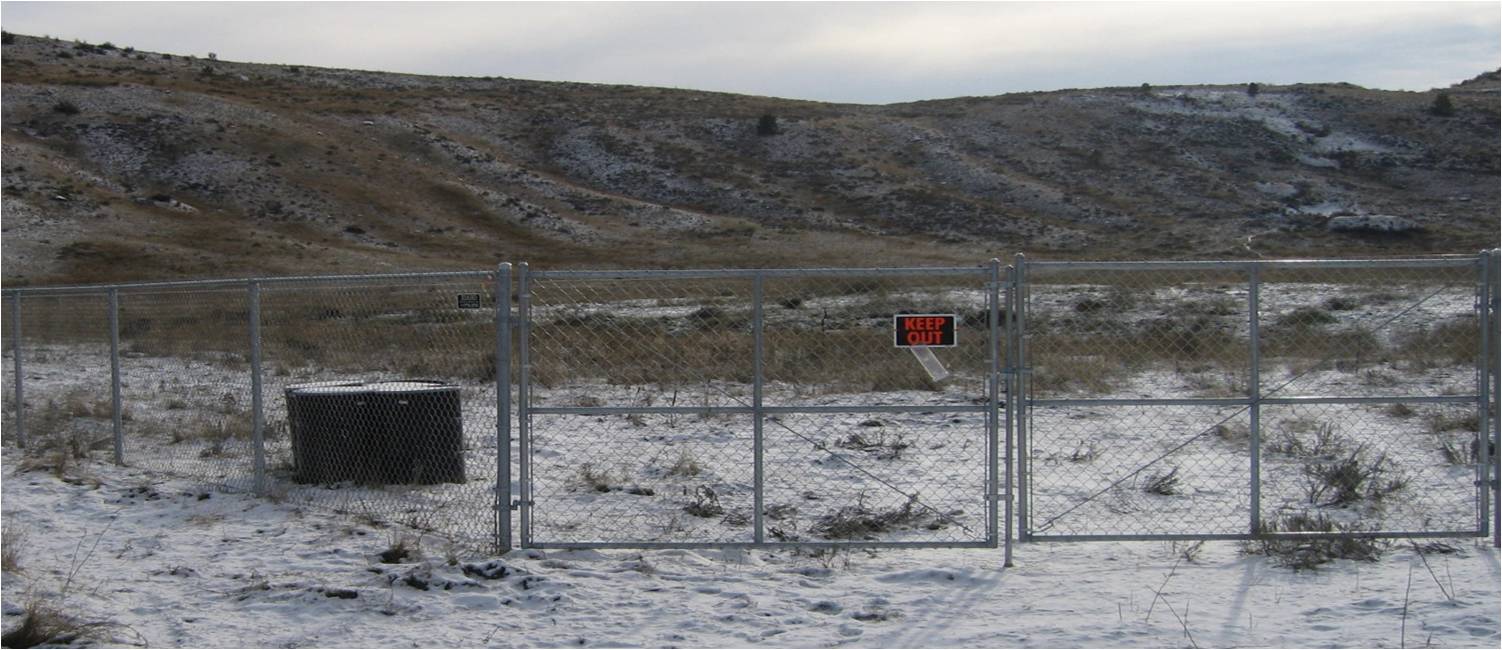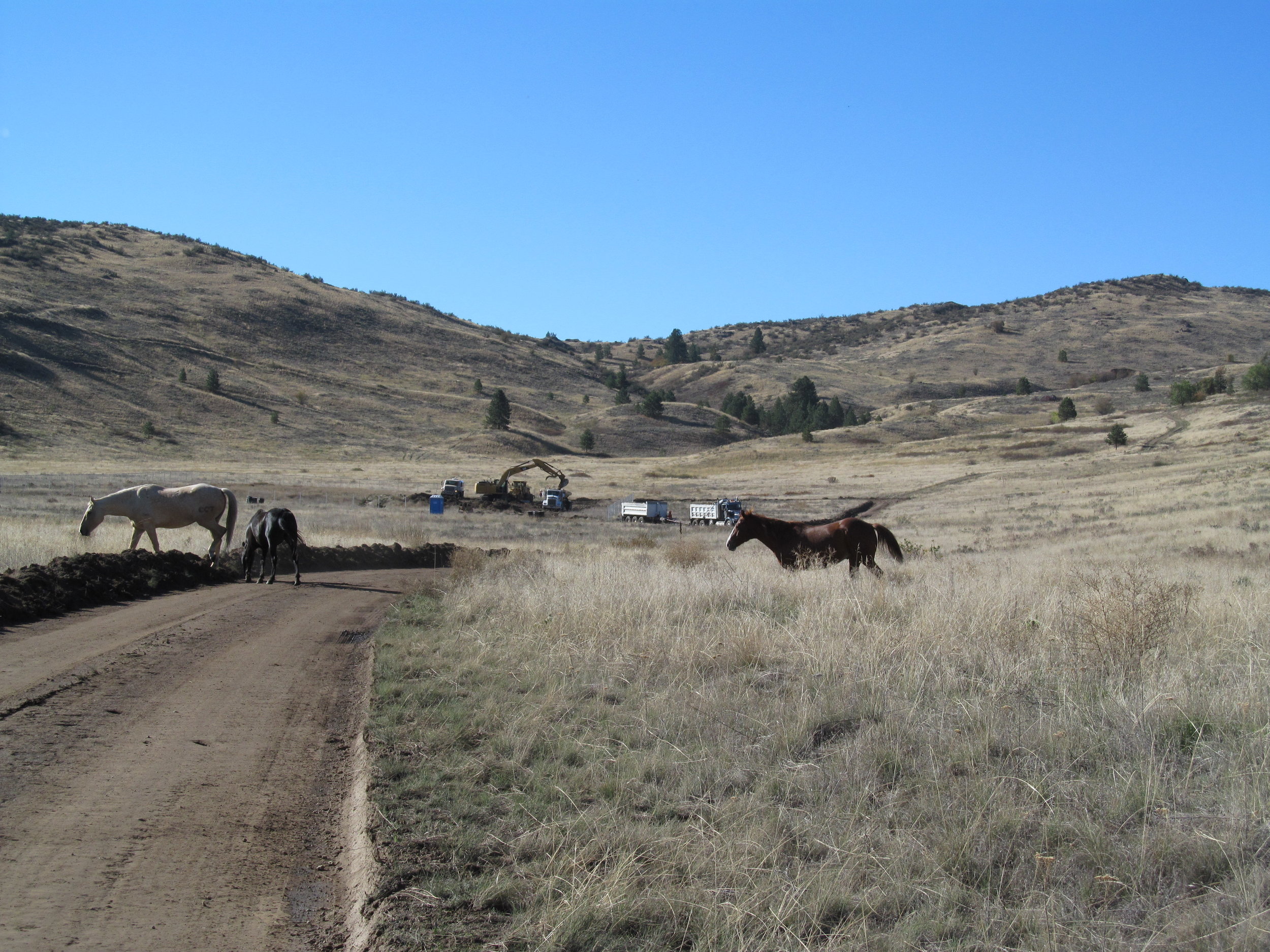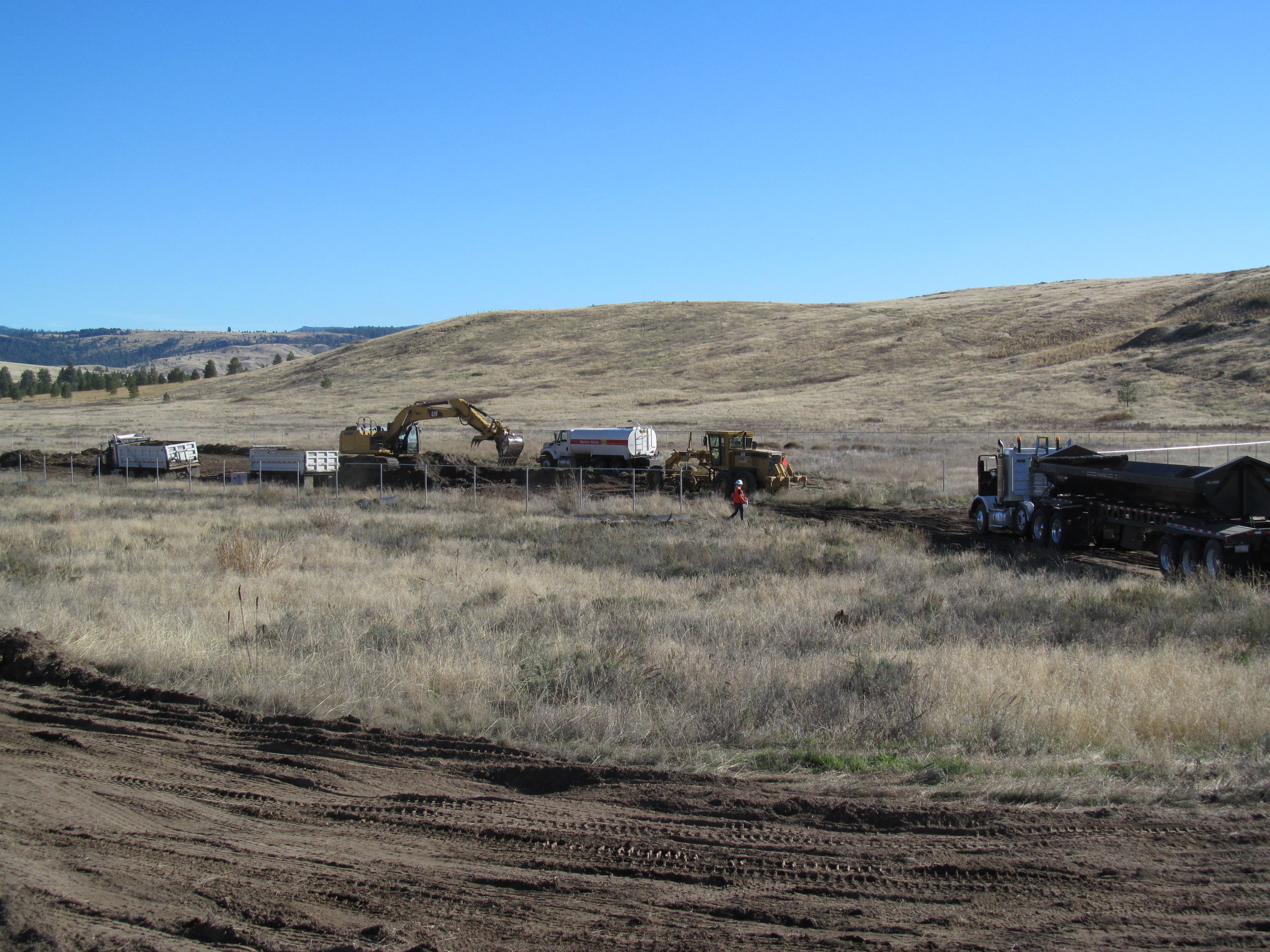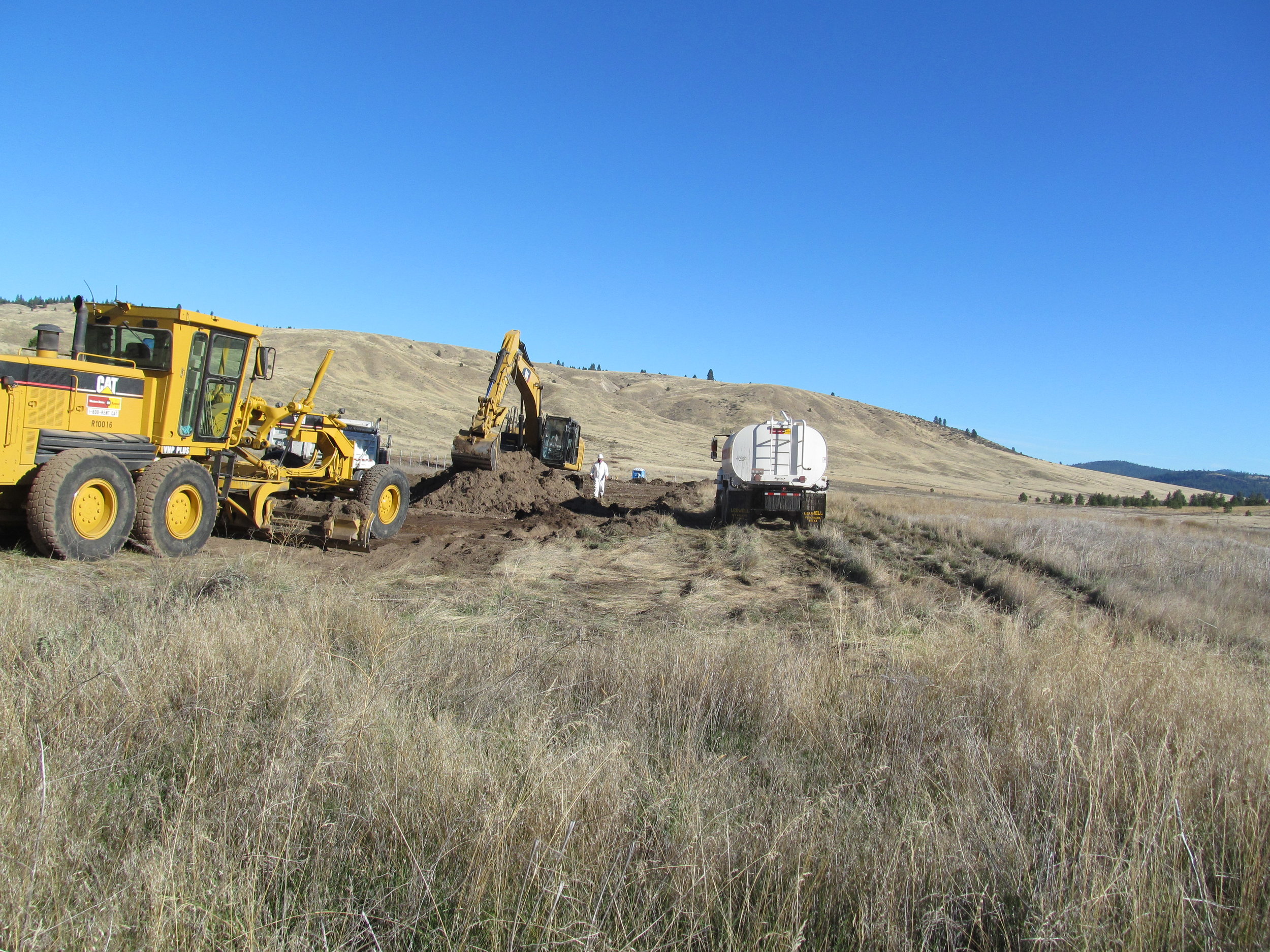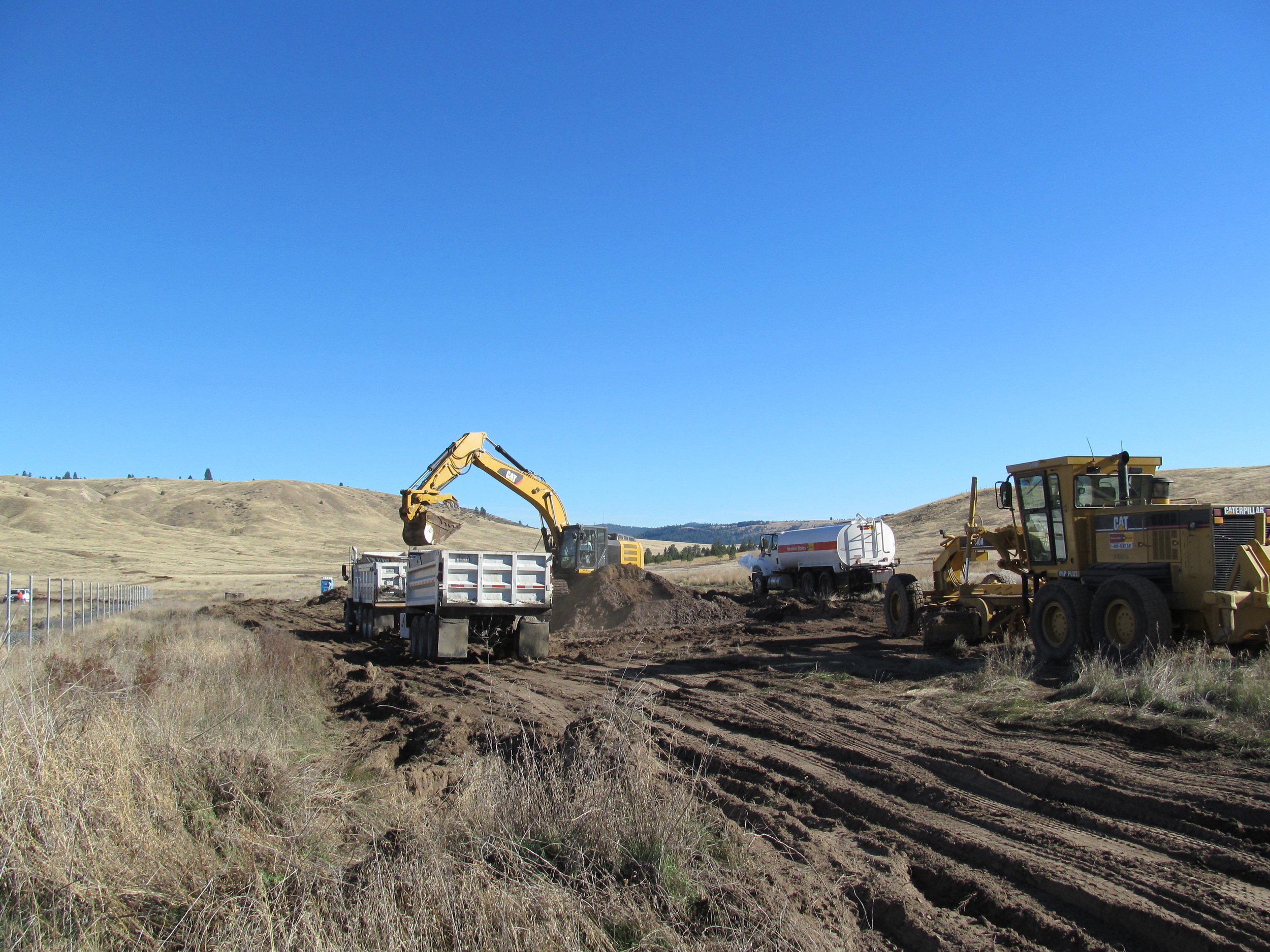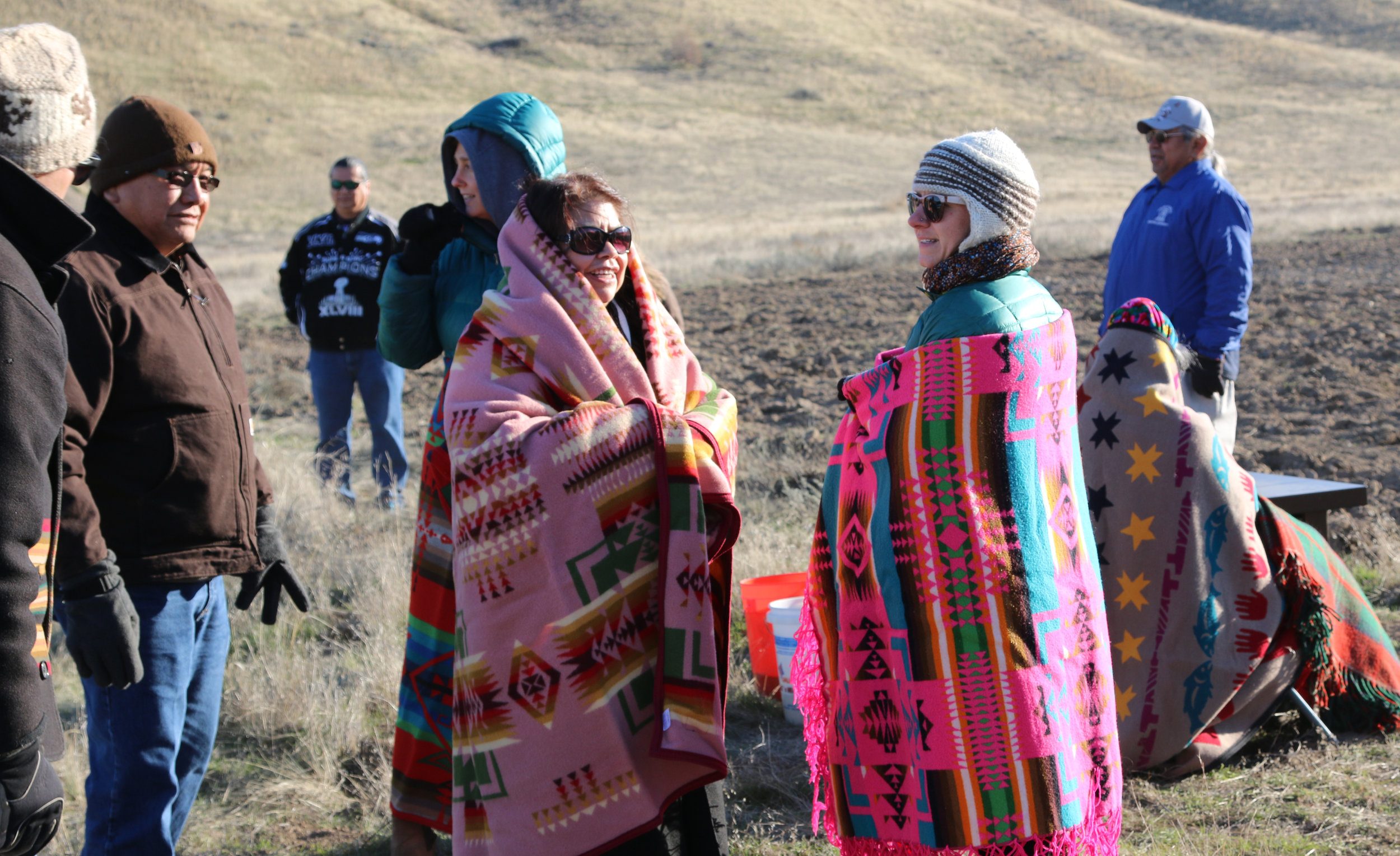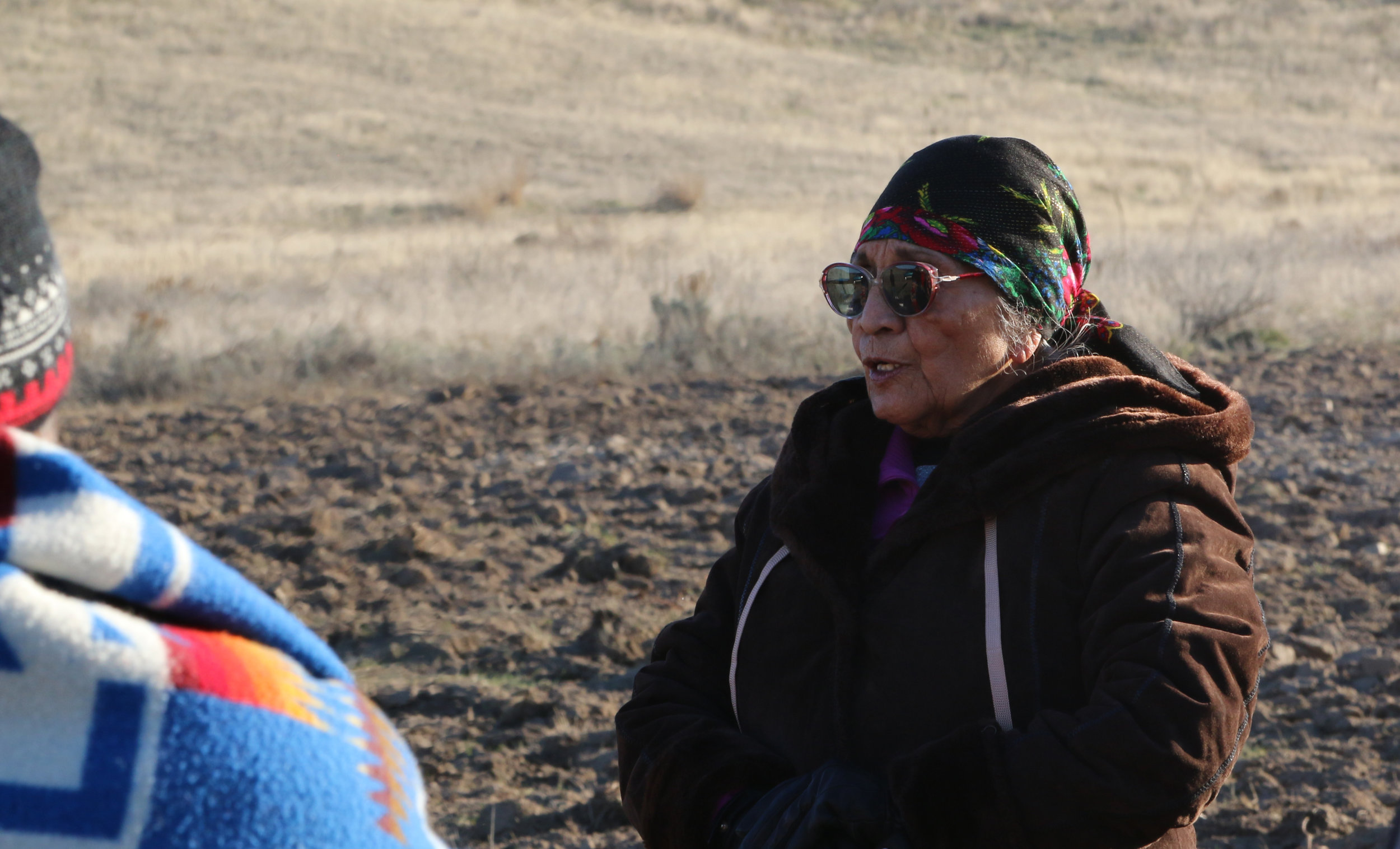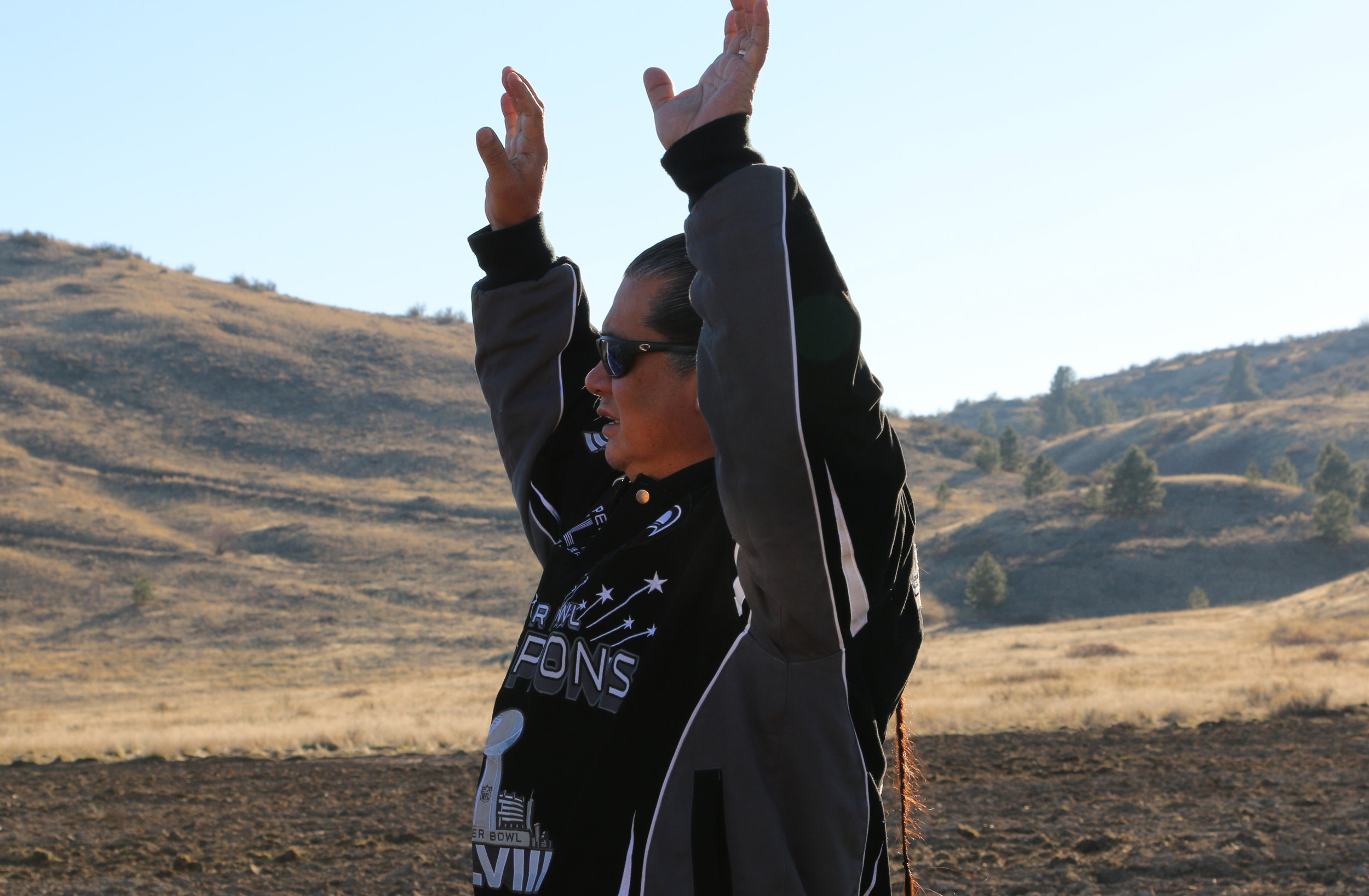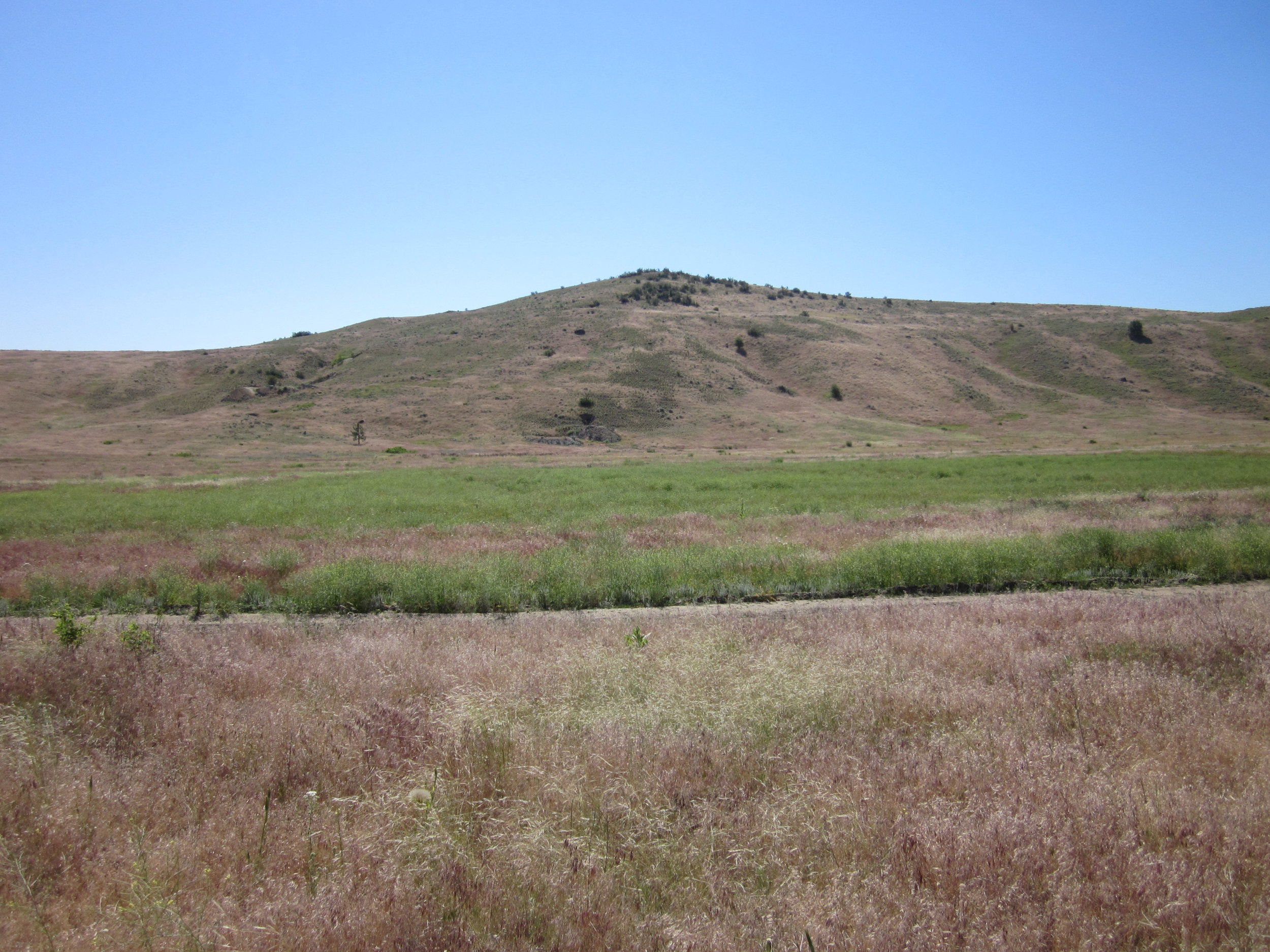Nespelem Post & Pole (NPP) and Mineral Hill Cleanup Project
A couple thousand gallon spill of PCP/diesel mix occurred at the NPP facility in 1980. At that time ~3000 yd3 of PCP/diesel contaminated soil was moved to the Mineral Hill site ~2 miles west of NPP where it was to be detoxified by landfarming. The balance of soil at the NPP site contaminated by the 1980 spill and historical operations was left on site at NPP, most of it at depths deeper than ~15’ below ground. Hot spot cleanups and successive phases of grant funded soil and groundwater investigations by Environmental Trust Department (ETD) at NPP led us to conclude that contamination remaining in NPP site soils had not impacted groundwater beneath the site (based on 4 years of annual testing and 4 consecutive quarters of groundwater testing). Soil testing at Mineral Hill landfarm confirmed that the soil was still toxic at concentrations above CCT cleanup standards but none of the contaminants had migrated horizontally or vertically from the initial placement. Because the spills had occurred before EPA instituted major changes in their hazmat regulations affecting releases from wood treating facilities, there was no federal regulatory mandate for further action at either site. However, placing contaminated soil at Mineral Hill site was an issue protested by membership at the time (1982) it was placed due to the area’s traditional use for root gathering and other culturally significant uses. At NPP, the unresolved presence of residual soil contamination would inevitably be an impediment to redevelopment of the site and an exposure risk to construction workers. Furthermore, as long as soil contamination remained unprotected from rainwater infiltration at both sites, the presence of contamination would represent a risk to groundwater. Tribal cleanup of both sites was therefore voluntary although due to the retroactive nature of EPA RCRA regulations, cleanup had to be very carefully planned and executed to avoid triggering full federal regulatory involvement that would drive cleanup cost far beyond a reasonable cost/benefit ratio and CCT’s ability to pay.
In 2012 dispersed and localized contaminated soils at NPP were consolidated at a single location at the site of the original 1980 spill. This season, all contaminated soil at Mineral Hill was relocated to the same location at NPP. Relocated soils were consolidated and compacted to engineered specifications. Continuous real-time monitoring for airborne contaminants was conducted throughout the relocation and consolidation efforts to ensure site workers and workers in nearby CCT offices were not exposed to elevated concentrations of the contaminants of concern. Weather permitting, the contractor will install ~ 27,000 ft2 of 2” thick asphalt over base course as the surface layer of the engineered cap. The asphalt cap was initially designed to specifically accommodate construction of a new solid waste transfer station and recycling center at NPP. Initial design of the impermeable cap and transfer station/recycling facility was funded by an EPA Area Wide Planning Grant. However, when long range solid waste planning that would enable funding and construction of the transfer station and recycling center stalled out this summer, a time-critical redesign of the cap was necessary to avoid losing grant funding or conversely, building a pad that was a fine cap on contamination but of very limited utility for future use. Our current redevelopment thinking is the pad would be a strong candidate for multiple storage unit facility for CCT departments and Nespelem residents. Long term maintenance to ensure pad integrity and annual monitoring to asses groundwater quality will be necessary.
Restoration of the Mineral Hill site to its prelandfarm condition is a major accomplishment. EPA’s model of “Brownfield Redevelopment” tends towards urban projects that can show or stimulate job creation and return on investment. In contrast, restoration of Mineral Hill to an unimpacted condition is driven by the intrinsic values of Tribal culture, tradition, and respect for our Mother. The site is graded and ready for seeding with a district-specific blend of native grasses. ETD intends to host a blessing of the restored site the first week of November coincident with seed planting. Kathy Moses is organizing the blessing. Contact her at x2413 for more information about that. Also, Kathy is a good source if you want background on public involvement over the course of site investigations and cleanup planning.
With regards to funding sources, the environmental investigative and hot spot cleanup efforts since 2005 have been funded by EPA 128(a) Tribal Response Program grants. Engineering design of the impermeable cap was completed with EPA Area-Wide Planning grant supplemented by 128(a) funds. Costs to relocate Mineral Hill soil and compact it at NPP in preparation for construction of the impermeable cap is funded through the CCT Cleanup Fund supplemented by 128(a) grant funds. Cost to construct the engineered cap is funded by an EPA Brownfields 104(k) grant supplemented by 128(a) grant funds.
In 2014, the Office of Environmental Trust celebrated a major accomplishment with the cleanup of Nespelem Post and Pole and Mineral Hill in Nespelem, WA.
2014 Cleanup at Nespelem Post and Pole

